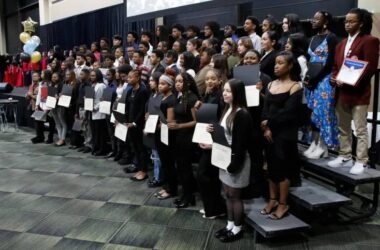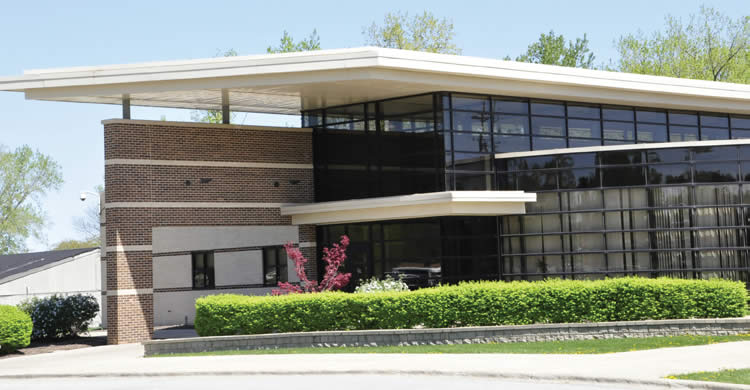Findings Help Inform Design and Implementation of High-Quality Feedback and Evaluation Systems
Phoenix, AZ—(ENEWSPF)–January 9, 2013 – The Measures of Effective Teaching (MET) project, a three-year study designed to determine how to best identify and promote great teaching, yesterday released its third and final research report. The project has demonstrated that it is possible to identify great teaching by combining three types of measures: classroom observations, student surveys, and student achievement gains. The findings will be useful to school districts working to implement new development and evaluation systems for teachers. Such systems should not only identify great teaching, but also provide the feedback teachers need to improve their practice and serve as the basis for more targeted professional development. The MET project, which was funded by the Bill & Melinda Gates Foundation, is a collaboration between dozens of independent research teams and nearly 3,000 teacher volunteers from seven U.S. public school districts.
“Teaching is complex, and great practice takes time, passion, high-quality materials, and tailored feedback designed to help each teacher continuously grow and improve,” said Vicki Phillips, Director of Education, College Ready – U.S. Program at the Bill & Melinda Gates Foundation. “Teachers have always wanted better feedback, and the MET project has highlighted tools like student surveys and observations that can allow teachers to take control of their own development. The combination of those measures and student growth data creates actionable information that teachers can trust.”
The final report from the MET project sought to answer important questions from practitioners and policy-makers about how to identify and foster great teaching. Key findings from the report include:
It is possible to develop reliable measures that identify great teaching. In the first year of the study, teaching practice was measured using a combination of student surveys, classroom observations, and student achievement gains. Then, in the second year, teachers were randomly assigned to different classrooms of students. The students’ outcomes were later measured using state tests and supplemental assessments designed to measure students’ conceptual understanding in math and ability to write short answer responses following reading passages. The teachers whose students did better during the first year of the project also had students who performed better following random assignment. Moreover, the magnitude of the achievement gains they generated aligned with the predictions. This is the first large-scale study to demonstrate, using random assignment, that it is possible to identify great teaching.
The report describes the trade-offs involved when school systems combine different measures (student achievement gains, classroom observations, and student surveys). However, the report shows that a more balanced approach – which incorporates the student survey data and classroom observations – has two important advantages: ratings are less likely to fluctuate from year to year, and the combination is more likely to identify teachers with better outcomes on assessments other than the state tests.
The report provides guidance on the best ways to achieve reliable classroom observations. Many school districts currently require observations by a single school administrator. The report recommends averaging observations from more than one observer, such as another administrator in a school or a peer observer.
“If we want students to learn more, teachers must become students of their own teaching. They need to see their own teaching in a new light. Public school systems across the country have been re-thinking how they describe instructional excellence and let teachers know when they’ve achieved it,” said Tom Kane, Professor of Education and Economics at Harvard’s Graduate School of Education and leader of the MET project. “This is not about accountability. It’s about providing the feedback every professional needs to strive towards excellence.”
The Bill & Melinda Gates Foundation has developed a set of guiding principles, also released today, that states and districts may consider when building and implementing improvement-focused evaluation systems. These principles are based on both the MET project findings and the experiences of the foundation’s partner districts over the past four years.
The MET project has been dedicated to providing its findings to the field in real time. The project’s first preliminary findings, released in December 2010, showed that surveying students about their perceptions of their classroom environment provides important information about teaching effectiveness as well as concrete feedback that can help teachers improve. The second set of preliminary findings, released in January 2012, examined classroom observations and offered key considerations for creating high-quality classroom observation systems.
“Great teaching is the most important in-school factor in determining student achievement. It is critical that we provide our teachers with the feedback and coaching they need to master this very challenging profession and become great teachers,” said Tom Boasberg, Superintendent, Denver Public Schools. “We all need to look at multiple sources of information to understand better our teachers’ strengths and development areas so we can provide the most targeted and useful coaching. The MET project’s findings offer new insights that are of immediate use in our classrooms and form a roadmap that districts can follow today.”
The MET project’s reports and publications are available on the project’s website at www.metproject.org.
About the MET Project
The MET project is a research partnership of academics, teachers, and education organizations committed to investigating better ways to identify and develop effective teaching. Funding is provided by the Bill & Melinda Gates Foundation.
The approximately 3,000 MET project teachers who volunteered to open up their classrooms for this work are from the following districts: The Charlotte-Mecklenburg Schools, the Dallas Independent Schools, the Denver Public Schools, the Hillsborough County Public Schools, the New York City Schools, the Memphis Public Schools, and the Pittsburgh Public Schools. Participating teachers and students were enrolled in math and English language arts (ELA) in grades 4 through 8, algebra I at the high school level, biology (or its equivalent) at the high school level, and English in grade 9.
Partners include representatives of the following institutions and organizations: American Institutes for Research, Cambridge Education, University of Chicago, The Danielson Group, Dartmouth University, Educational Testing Service, Empirical Education, Harvard University, National Board for Professional Teaching Standards, National Math and Science Initiative, New Teacher Center, University of Michigan, RAND, Rutgers University, University of Southern California, Stanford University, Teachscape, University of Texas, University of Virginia, University of Washington, and Westat.
###
Bill & Melinda Gates Foundation
Guided by the belief that every life has equal value, the Bill & Melinda Gates Foundation works to help all people lead healthy, productive lives. In developing countries, it focuses on improving people’s health and giving them the chance to lift themselves out of hunger and extreme poverty. In the United States, it seeks to ensure that all people—especially those with the fewest resources—have access to the opportunities they need to succeed in school and life. Based in Seattle, Washington, the foundation is led by CEO Jeff Raikes and Co-chair William H. Gates Sr., under the direction of Bill and Melinda Gates and Warren Buffett.
Source: http://www.gatesfoundation.org








